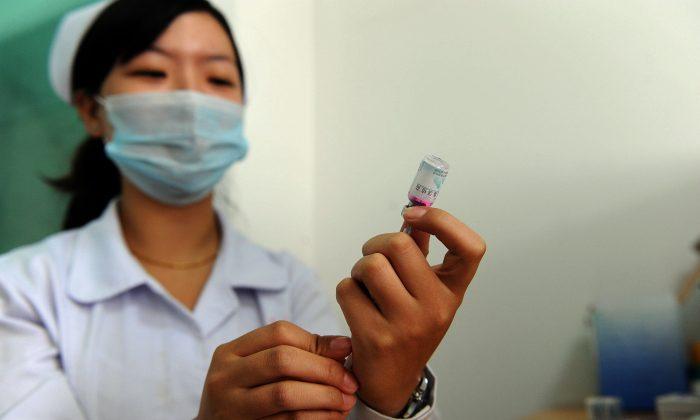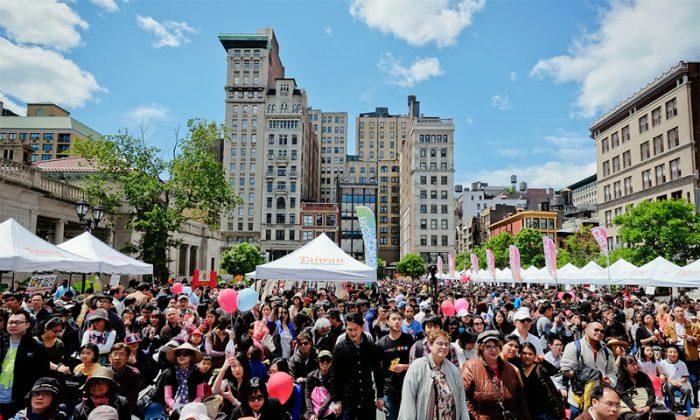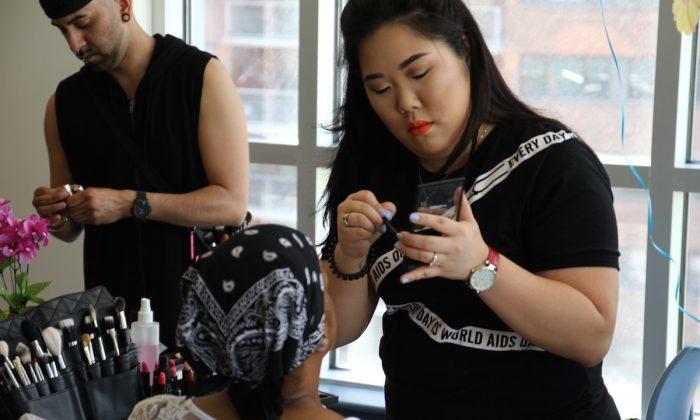Vaccine factories in China are stuck using methods from the 1960’s to make vaccines, recent reports found.
Inferior in quality to their counterparts in other countries, these vaccines have an increased risk of giving the user a disability for life or even killing them.
For parents whose children become victims of vaccines, the harm that an injection suddenly brings about can be startling and heartbreaking.
“A single dose of that vaccine and it’s as if an atomic bomb crashed through our home, wrecking our child and wrecking our home,” wrote Li Bao, a parent from Linyi city in Shandong Province, in a letter to the Chinese official petition office, demanding compensation after her child became disabled from an injection of the H1N1 vaccine. Her case was cited by the Nanfang Daily newspaper, a state-run paper in Guangdong Province.
“My younger brother passed away from a vaccination when he was only five years old. Back then, my mom was in hysterics trying to get an explanation from the hospital. But in the end, nothing was made clear,” a woman living in China, surname Fang, said in an interview with Epoch Times.
China is still using outdated methods from the 1960’s to make vaccines because the industry is controlled by corrupt officials who divide benefits and set prices, said Chen Taoan, a former chief at the Shaanxi Center for Disease Control, cited by New Tang Dynasty (NTD) Television.
According to Chen, the effective oligopoly suppresses any competition that would normally advance technology and assures that vaccines of inferior quality remain in the market.
He also spoke of “many flaws” in the storage, transportation, marketing, and management of the vaccines which increased the chance of the vaccine user becoming disabled. The Nanfang Daily published an eight-paged survey that highlighted corrupt officials as one of the main reasons for the domestic vaccine industry’s dilapidation.
Furthermore, vaccines are often bought and sold through illegal, unregulated channels, which heightens the risk. “Some unethical vaccine traders buy from the official manufacturer and sell their wares on the black market; which increases health risks. Then to protect their own behinds, officials will say that the vaccine is properly stored,” Chen told NTD.
“The quality of some Chinese vaccines haven’t met the health standards necessary for mass consumption,” the Center for Disease Control Director, Wang Yu, admitted.
To prevent domestic companies from losing business to their more technology-advanced competitors abroad, “imported vaccines were banned from hospitals,” a netizen from Shanghai Province wrote on Sina Weibo, China’s Twitter-like platform, “Some families who could have afforded the more expensive imported vaccines now don’t even have access to them. You can blame this all on officials’ self-interest.”
The total number of people suffering from adverse effects in China is unknown because such data is not collected.
However, in the U.S., where such information is self-reported, the Center for Disease Control received about eleven adverse effect reports per every 100,000 vaccines distributed for a total of 128,717 reports and of these, 14.2 percent described serious adverse effects.
Death was approximately 1.5 percent of all adverse reports and over 1.9 billion vaccines were given in the U.S. in the 1991-2001 time frame.
In Australia, there is also a mechanism in place for people to report adverse effects to the Department of Health and Aging. But these measures are absent in countries such as China and India, the latter having studies but no systematic database, making it difficult to determine how many suffer from vaccines’ adverse effects.
The Chinese regime claims that a billion mainland Chinese are vaccinated every year, and only ten thousandth percent of that sum are disabled or suffer from other, sometimes fatal, effects, according to state-run media. Experts say that ten thousandth percent is a very conservative estimate that still means at least 1,000 children, the common recipients of vaccines, are permanently crippled every year.
A billion vaccinated people is a high estimate, given that China has a population of 1.35 billion people, with 50 percent living in rural areas, according to the CIA World Factbook, and the prevalence of hepatitis A in China, which is commonly protected by vaccination.
As large numbers of parents search for compensation for their vaccine-disabled kids, many petitioned Beijing but few have succeeded in getting any aid.
“If you go to the court against a hospital, you'll always lose the lawsuit,” Fang, the sister of the boy who died from a vaccine, said. “The hospital could be both the defendant and the judge.”





Friends Read Free